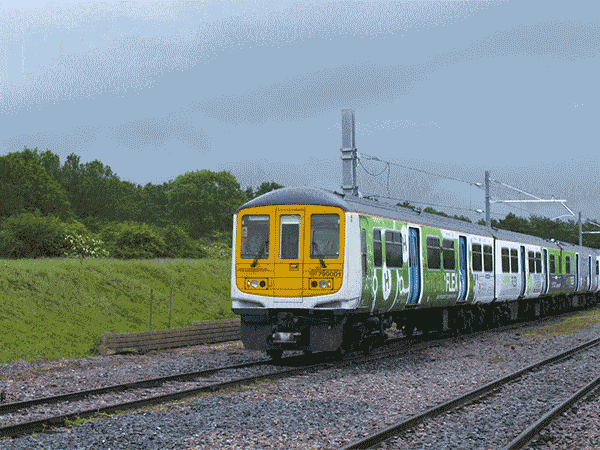The HydroFlex hydrogen train is another sign of the push towards zero-emission solutions for trains too.

The UK's first hydrogen train gets underway this week, marking a historic page in the global push towards clean transport. The passengers of the first test trips got on the HydroFlex prototype and scoured far and wide without producing pollution.
It is an initiative of the Railway Research Center of the University of Birmingham in joint venture with Porterbrook, the English railway company. The first four-car prototype has rolled around the test center in Warwickshire. The next test in December will use the main rail network.
“Within a few years we will have a fleet of these trains operating across the UK,” says Stuart Hillmansen, one of the engineers involved in the project, during the presentation conference.
While waiting for him too hydrogen planes spread, trains are another important ally in the fight of states and cities to improve air quality and combat climate change. Many systems around the world already rely on mixed diesel-electric trains: the UK has chosen to eliminate its locomotives (diesel only, around 3900) by 2040.
The situation elsewhere
In Germany, two trains of this type have been in service since 2018. Alstom, the company that made them, has announced another 27 for the next few years. Japan and Korea are in the planning stages, and the US is planning tests in California and North Carolina.
How HydroFlex is made
HydroFlex consists of four wagons, one of which acts as a driving force with an energy combination consisting of a fuel cell module, 20kg of hydrogen in four pressurized tanks and a 200kW lithium battery.
Hydrogen is pumped through the fuel cell, which pulls oxygen from the air to create electricity. Excess energy is stored in the lithium battery. Unlike diesel locomotives, of course, there are no harmful emissions in the hydrogen train: just heat and water.
“It's a very smooth, quiet ride,” says Andreas Hoffrichter, a professor of rail management at Michigan State University, who helped build Hydrogen.
The hydrogen train will change the very structure of trains. Lighter convoys, for frequent transport, will be equipped with very large batteries and small fuel cells, also exploiting braking energy. For longer distances with trains making fewer stops, the best configuration will include larger cells and smaller batteries.
The challenges still open
For the massive diffusion of the hydrogen train, protection from shock and vibration will need to be made permanent. It's not just about preventing accidents, but rather excessive oscillations when replacing wagons. Another problem to be solved is linked to the conversion of the networks, especially in the supply points which are missing almost everywhere, and where they are present they do not always use renewables for the production of hydrogen (so we are at the same point as before).
A few more efforts and the stationmaster will be able to lift his shovel: it will be green like never before.


